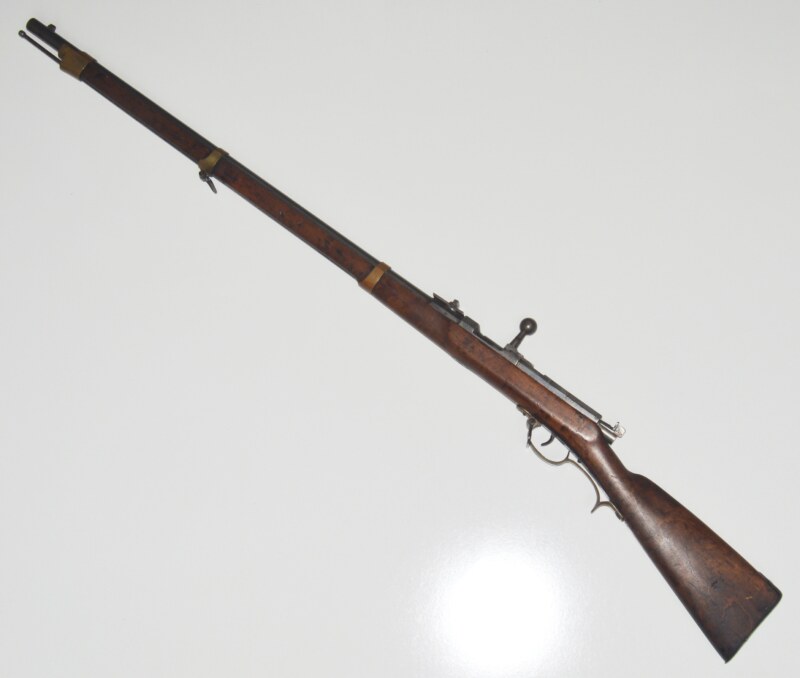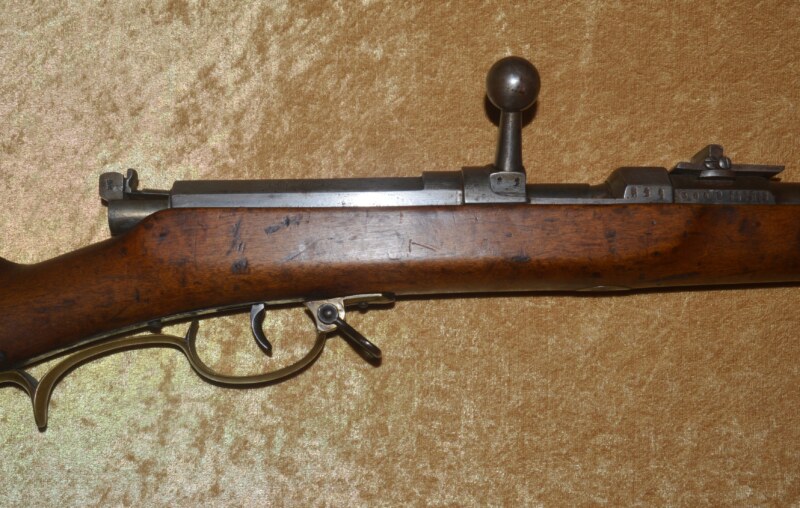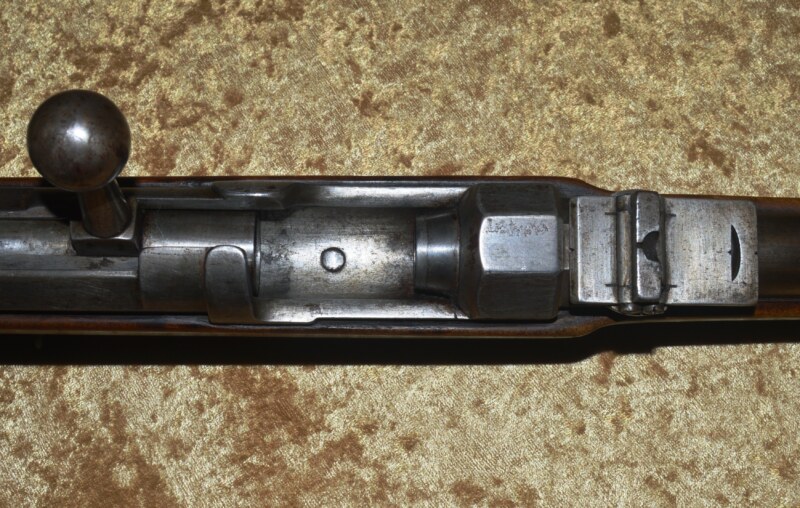Description
First invented by Johann Nikolaus Dreyse (1787–1867) in 1836 the design was ahead of
its time when most countries were still using muzzle-loading flintlocks and the percussion
system was in its infancy. It was adopted by the Prussian Military in 1841 as the “leichtes
Perkussionsgewehr Model 1841″. The cartridge used with this bolt-action breech-loading
rifle consisted of a paper case, a bullet, a percussion cap, and a black powder charge.
The 15.4 mm bullet was shaped like an acorn, with the broader end forming a point, and
the primer attached to its base. The firing mechanism used a needle, which upon
depressing the trigger sprung forward through the paper cartridge and powder charge to
strike the primer. The primer then fired backwards, igniting the powder charge. It allowed
a trained soldier to accurately fire up to 12 rounds per minute with a maximum effective
range of 600 yards. The gun was extensively tested by the British in trials beginning in
1849, but was not adopted primarily due to the delicacy of the needle and spring and gas
increasingly escaping from the breech the longer the gun was fired. During its working life
it experienced several upgrades, this example being the Model 62 introduced in 1862.
The rifle proved decisive in the Austro-Prussian War of 1866, but was outclassed by the
French Chassepot in the Franco-Prussian War of 1870. In 1867, Romania purchased
20,000 Dreyse rifles from the Prussian government which were used to great effect in the
Romanian War of Independence.
This example in wonderful condition for its age with matching SN 2438 made in Danzig
and dated 1867. The 33″ barrel with excellent rifling is mounted to the full stock by three
brass barrel bands secured by springs; three position folding rear sight and fixed front
blade sight.. Brass trigger guard with steel sling swivel at the forward end and another
attached to the middle barrel band. Profusely stamped with clear markings, including
“(Eagle)/DANZIG/Z.G. Mod. 62″ on left side of the receiver and date “1867 on the right
side; numerous crowned letter stamps on barrel, bolt, barrel bands, trigger guard, etc.
Inspector cartouche on right side of butt stock and forward of trigger guard. Original
cleaning rod mounted on the underside of the barrel and sliding through the barrel bands.
Metal smooth and very good plus; stock sound, but showing nicks and scratches typical of
field use and several short stress cracks just forward of the steel butt plate. Overall length
53 ½”. A very good example of this scarce revolutionary military rifle. Even retains an
original operable needle! The needles were quite fragile and often do not survive.

















 17th C Halberd, Probably English
17th C Halberd, Probably English  Spanish Colonial Halberd, 18th/19th C
Spanish Colonial Halberd, 18th/19th C  Chiselled And Gilt Smallsword, Probably French, 18th Century
Chiselled And Gilt Smallsword, Probably French, 18th Century  Exquisite North Italian (Brescia) Flintlock Pistol, ca. 1650
Exquisite North Italian (Brescia) Flintlock Pistol, ca. 1650